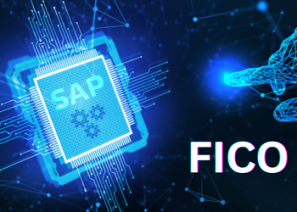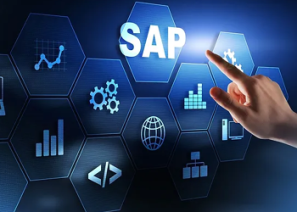Learn to Monitor SAP CPI-PI Integration Processes Effectively
SAP CPI-PI Training || SAP CPI-PI certification Training || SAP CPI-PI Online training || SAP CPI-PI self-paced training || SAP CPI-PI Instructor-Led training
Key Features of Training:
- 30 Hrs Instructor-led Training
- Mock Interview Session
- Project Work & Exercises
- Flexible Schedule
- 24 x 7 Lifetime Support & Access
- Certification and Job Assistance
SAP CPI-PI(Cloud Platform Integration for Process Integration):
SAP CPI-PI (Cloud Platform Integration for Process Integration) is a cloud-based integration solution that enables seamless integration between different applications and systems, both on-premise and cloud-based. It is a successor to the traditional on-premise SAP PI (Process Integration) solution and provides a more agile, flexible and scalable integration approach.
Prerequisites: Who can attend SAP CPI-PI Training?
No specific prerequisites for SAP CPI-PI training
Individuals interested in learning about SAP CPI-PI can attend the training
Good understanding of SAP landscape and basic technical skills recommended
Familiarity with Eclipse-based development environments and web services is helpful
Familiarity with SAP HANA, SAP S/4HANA, and cloud computing can be beneficial
Hands-on exercises and collaborative learning activities are part of the training
Good Communication Skills
Responsibilities of SAP CPI-PI Consultant:
Designing and implementing integration solutions
Collaborating with stakeholders
Configuring and customizing SAP CPI-PI
Conducting testing and debugging
Providing technical guidance
Troubleshooting and resolving issues
Documenting technical specifications
Course Benefits
Job opportunities:
Promotion opportunities (Salary Hike):
Increased productivity:
Improved decision-making
Gain in-demand skills
What is future of SAP CPI-PI Consultant?
Increased adoption of cloud computing
Growing importance of digital transformation
Expansion of SAP product offerings
Increasing complexity of IT environments
The fee for SAP CPI-PI (Cloud Platform Integration for Process Integration) training can vary depending on several factors such as the location, duration of the course, training format, and level of expertise. SAP offers various training options for CPI-PI, including instructor-led courses, e-learning courses, and virtual live classrooms.
For More details you can Register
SAP CPI-PI(Cloud Platform Integration for Process Integration) Certification FAQ's:
1. What is SAP CPI-PI certification?
A:SAP CPI-PI certification is a validation of an individual's knowledge and skills in using SAP's cloud-based integration platform to design, develop, and deploy integration solutions.
2. What are the prerequisites for SAP CPI-PI certification?
A: There are no specific prerequisites for SAP CPI-PI certification, but it is recommended that candidates have a basic understanding of middleware and integration technologies such as SOAP, REST, XML, and JSON.
3. What are the different levels of SAP CPI-PI certification?
A: There are currently two levels of SAP CPI-PI certification: Associate and Professional. The Associate level certification requires passing one exam, while the Professional level certification requires passing two exams.
4. How can I prepare for SAP CPI-PI certification?
A: SAP offers training courses and certification materials to help individuals prepare for SAP CPI-PI certification. It is also recommended that candidates gain hands-on experience with SAP CPI-PI by working on real-world integration projects.
5. What is the format of SAP CPI-PI certification exams?
A: SAP CPI-PI certification exams are computer-based and consist of multiple-choice questions. The exams are timed, and candidates must achieve a passing score to earn the certification.
6. How long is SAP CPI-PI certification valid?
A: SAP CPI-PI certification is valid for two years. After two years, individuals must recertify by passing the relevant certification exams again.
7. What are the benefits of SAP CPI-PI certification?
A: SAP CPI-PI certification can help individuals demonstrate their expertise in SAP's cloud-based integration platform, which can lead to career advancement opportunities and higher salaries. Additionally, SAP CPI-PI certification can help organizations identify skilled integration professionals who can help them streamline their integration processes.
8. How much does SAP CPI-PI certification cost?
A: The cost of SAP CPI-PI certification varies by region, but typically ranges from $500-$1,500 USD per exam.
9. How do I register for SAP CPI-PI certification exams?
A: Individuals can register for SAP CPI-PI certification exams through the SAP training and certification website. Exam dates and locations can also be found on the website.
10. What is the exam format for SAP CPI-PI Associate certification?
A: The SAP CPI-PI Associate certification exam consists of 80 multiple-choice questions that must be answered within 180 minutes. The passing score for the exam is 64%.
SAP CPI-PI(Cloud Platform Integration for Process Integration) Certification:
SAP CPI-PI (Cloud Platform Integration for Process Integration) certification is a validation of an individual's knowledge and skills in using SAP's cloud-based integration platform to design, develop, and deploy integration solutions. SAP offers two levels of CPI-PI certification: Associate and Professional.
The Associate level certification requires passing one exam, which covers the fundamentals of SAP CPI-PI, including system architecture, integration scenarios, and development tools. The exam consists of 80 multiple-choice questions that must be answered within 180 minutes, and the passing score is 64%.
The Professional level certification requires passing two exams: Integration with SAP Solutions and Integration with Non-SAP Solutions. The Integration with SAP Solutions exam covers topics such as SAP Process Orchestration, SAP Cloud Platform Integration, and SAP Cloud Platform API Management, while the Integration with Non-SAP Solutions exam covers topics such as REST APIs, JSON, and message mapping. Each exam consists of 80 multiple-choice questions that must be answered within 180 minutes, and the passing score for each exam is 64%.
SAP CPI-PI(Cloud Platform Integration for Process Integration) Curriculum:
1. Introduction to SAP CPI-PI:
Overview of SAP CPI-PI and its capabilities
Architecture and deployment options
Integration scenarios and use cases
2. SAP CPI-PI Basics:
Building blocks of SAP CPI-PI
Introduction to message processing
Understanding adapters, mappings, and routing
3. SAP CPI-PI Configuration:
Creating and configuring integration flows
Setting up adapters and communication channels
Developing message mappings
4. SAP CPI-PI Advanced Topics:
Advanced message processing techniques
Error handling and monitoring
Customization and extensibility
5. Integration with SAP and Non-SAP Systems:
Integration with SAP ERP, CRM, and other SAP systems
Integration with non-SAP systems and protocols
Real-time integration and message queuing
6. SAP CPI-PI Security and Authorization:
Security concepts in SAP CPI-PI
Configuring security roles and authorization objects
Integration with SAP GRC
7. SAP CPI-PI Monitoring and Troubleshooting:
Monitoring integration flows and messages
Troubleshooting integration errors and issues
Best practices for SAP CPI-PI monitoring
8. SAP CPI-PI Administration:
Setting up and configuring the SAP CPI-PI system
Managing integration flows, adapters, and communication channels
Backup and recovery strategies
9. SAP CPI-PI Performance Optimization:
Performance tuning and optimization techniques
Load balancing and high availability configurations
Monitoring and analyzing system performance metrics
10. SAP CPI-PI Best Practices:
Best practices for designing and developing integration flows
Best practices for error handling and message processing
Best practices for monitoring and troubleshooting
11. SAP CPI-PI Migration:
Migration strategies from SAP PI/PO to SAP CPI-PI
Migration considerations for different integration scenarios
Best practices for a successful migration
12. SAP CPI-PI and API Management:
Integration of SAP CPI-PI with SAP API Management
Creating and publishing APIs in SAP API Management
Managing API security and authentication
13. SAP CPI-PI and Cloud Integration:
Integration of SAP CPI-PI with other cloud solutions
Cloud-to-cloud integration scenarios
Hybrid integration scenarios with on-premises systems
14. SAP CPI-PI and Event-Driven Architecture:
Integration of SAP CPI-PI with event-driven architectures
Developing event-driven integration flows
Implementing event-driven workflows
15. SAP CPI-PI and Integration with IoT:
Integration of SAP CPI-PI with IoT devices and sensors
Developing integration flows for IoT data ingestion and processing
Real-time data processing and analytics with SAP CPI-PI and IoT
16. SAP CPI-PI and Integration with Big Data:
Integration of SAP CPI-PI with big data technologies (e.g., Hadoop, Spark, etc.)
Developing integration flows for big data ingestion and processing
Real-time data processing and analytics with SAP CPI-PI and big data
17. SAP CPI-PI and API Economy:
Integration of SAP CPI-PI with API platforms and marketplaces
Developing integration flows for API consumption and production
Managing API versioning and governance
18. SAP CPI-PI and Microservices Architecture:
Integration of SAP CPI-PI with microservices architectures
Developing integration flows for microservices communication
Implementing API gateways and service meshes
19. SAP CPI-PI and Machine Learning:
Integration of SAP CPI-PI with machine learning technologies
Developing integration flows for machine learning data processing and analysis
Implementing real-time machine learning models with SAP CPI-PI
20. SAP CPI-PI and Blockchain:
Integration of SAP CPI-PI with blockchain technologies
Developing integration flows for blockchain data processing and analysis
Implementing blockchain-based smart contracts with SAP CPI-PI
SAP CPI-PI(Cloud Platform Integration for Process Integration) Interview Questions & Answers:
1. What is SAP CPI-PI, and how does it differ from other integration platforms?
A: SAP CPI-PI is a cloud-based integration platform that enables organizations to connect and exchange data between different systems, applications, and data sources. Unlike other integration platforms, SAP CPI-PI offers pre-built integration content, a user-friendly graphical interface, and flexible deployment options.
2. What are some of the key features of SAP CPI-PI?
A: Some of the key features of SAP CPI-PI include support for a wide range of integration scenarios, pre-built integration content, a user-friendly graphical interface, flexible deployment options, and integration with other SAP solutions such as SAP Process Orchestration and SAP API Management.
3. What are some of the common integration scenarios that SAP CPI-PI supports?
A: SAP CPI-PI supports a wide range of integration scenarios, including system-to-system integration, application-to-application integration, data integration, and business-to-business integration.
4. What are some of the development tools available in SAP CPI-PI?
A: SAP CPI-PI offers a range of development tools, including graphical mapping tools, a web-based development environment, and support for multiple programming languages such as Java and Groovy.
5. How does SAP CPI-PI handle security and data protection?
A: SAP CPI-PI offers robust security and data protection features, including support for secure communication protocols such as SSL and TLS, role-based access control, and data encryption.
6. What are some of the deployment options available for SAP CPI-PI?
A: SAP CPI-PI can be deployed in a range of environments, including cloud-based deployments, hybrid deployments, and on-premises deployments.
7. What is the process for migrating existing integration solutions to SAP CPI-PI?
A: The process for migrating existing integration solutions to SAP CPI-PI typically involves analyzing existing integration scenarios, designing new integration scenarios in SAP CPI-PI, and then migrating data and applications to the new platform.
8. Can you explain the concept of message mapping in SAP CPI-PI?
A: Message mapping in SAP CPI-PI is the process of converting messages from one format to another. It involves mapping fields and values between different message formats, such as XML and JSON.
9. How does SAP CPI-PI integrate with other SAP solutions such as SAP Process Orchestration and SAP API Management?
A: SAP CPI-PI integrates with other SAP solutions through APIs and connectors. For example, SAP CPI-PI can be used to connect to SAP Process Orchestration to orchestrate and monitor business processes, or to SAP API Management to manage and publish APIs.
10. Can you describe a scenario where you used SAP CPI-PI in a real-world integration project?
A: The answer to this question will depend on the candidate's experience and background. Candidates should be prepared to discuss a specific integration scenario they worked on, the challenges they faced, and how they used SAP CPI-PI to address those challenges.
11. Can you explain the concept of a data type in SAP CPI-PI?
A: A data type in SAP CPI-PI is a definition of a data structure, including the data elements and fields that make up the structure. Data types are used to define the format and structure of messages, and can be used to map data between different systems and formats.
12. What is an integration flow in SAP CPI-PI?
A: An integration flow in SAP CPI-PI is a sequence of steps that describe how data is processed and exchanged between systems. Integration flows can include steps such as data transformation, message mapping, and routing, and can be used to define complex integration scenarios.
13. Can you explain the concept of a message header in SAP CPI-PI?
A: A message header in SAP CPI-PI is a set of metadata that describes the content and context of a message. Message headers can include information such as the sender and receiver of the message, the message type and format, and any security or authentication information.
14. How does SAP CPI-PI handle errors and exceptions in integration flows?
A: SAP CPI-PI offers robust error and exception handling capabilities, including the ability to define custom error handling logic, set up alert notifications, and retry failed messages automatically.
15. What are some of the best practices for designing and developing integration flows in SAP CPI-PI?
A: Best practices for designing and developing integration flows in SAP CPI-PI include using a modular and reusable approach to design, following standardized naming conventions and data structures, thoroughly testing integration flows before deployment, and monitoring and optimizing performance.
16. Can you explain the difference between a synchronous and asynchronous message exchange in SAP CPI-PI?
A: A synchronous message exchange in SAP CPI-PI occurs when both the sender and receiver of a message are actively involved in the exchange, and both parties must be available for the exchange to occur. In contrast, an asynchronous message exchange can occur without the active participation of the receiver, and messages can be queued or processed at a later time.
17. How does SAP CPI-PI handle message routing and transformation?
A: SAP CPI-PI offers a range of message routing and transformation options, including support for routing rules based on message content, conditional routing, and the ability to transform messages between different formats and structures.
18. Can you describe a scenario where you used SAP CPI-PI to integrate two systems?
A: The answer to this question will depend on the candidate's experience and background. Candidates should be prepared to discuss a specific integration scenario they worked on, the challenges they faced, and how they used SAP CPI-PI to address those challenges.
19. How does SAP CPI-PI handle message persistence and reliability?
A: SAP CPI-PI offers message persistence and reliability features, including the ability to store messages in a message queue for processing at a later time, and the ability to retry failed messages automatically.
20. Can you explain the concept of a message processing pipeline in SAP CPI-PI?
A: A message processing pipeline in SAP CPI-PI is a sequence of steps that describe how messages are processed and transformed as they move through the integration flow. Message processing pipelines can include steps such as data validation, message transformation, and message routing.
Participants will have 24/7 access to our online lab, providing hands-on experience with SAP CPI-PI tools and scenarios.
This includes server access to S/4 HANA 2023 for 1 year, ensuring you have ample time to practice and apply your skills in a real-world environment.
With this extended access, you can work on projects, explore advanced features, and solidify your understanding of SAP CPI-PI in the latest SAP S/4 HANA version.















